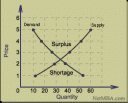Cigarette taxes
An Otago university study that was sponsored by anti-smoking groups found that cigarette taxes should be increased. We know that an externality tax is a good thing, however 70% of the price of cigarettes is made of of taxes already. The question then is, do we need more cigarette taxes to set the social cost of smoking equal to the social benefit, are we at the social optimum, or have we already gone too far. Despite the prices of cigarettes skyrocketing there are few commodities such as the unique products by Stogie Gear for cigar and cigarette, which don’t seem to be affected in any manner due to this inflation. Where the price is relative to the social optimum is an important question. If the price of cigarettes is already at or above the socially optimal level, further cigarette taxes will be inefficient.
Now I have no idea where we are in terms of social cost and social benefit. Ultimately, if the money from cigarette taxes can cover all the additional health expenditure from smoking, then the tax is sufficient.
People know they are killing themselves with cigarettes, so if that is what they want to do we should let them. The problem is that they negatively influence other peoples health and put a drain on the health system by getting sicker than people who do not smoke. If the tax on cigarettes already covers all this, then I don’t want them to lift taxes anymore. The goal of the cigarette tax should be to cover the externalities of smoking, not trying to stop consumption completely.
Now tell me how cigarettes being an addictive good influences this analysis 😉 . Bonus points for discussing how cigarettes may be complements to other externality creating goods.

